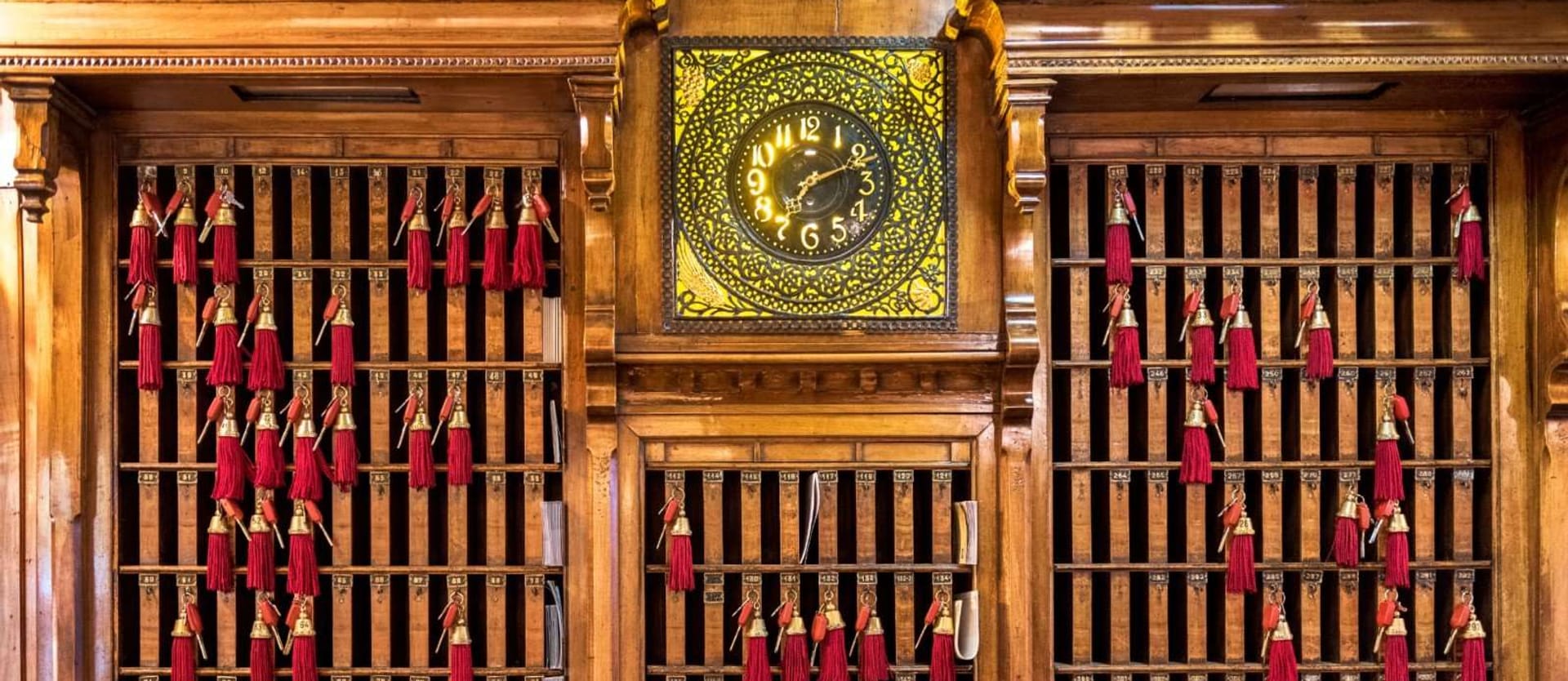The hotel business produces a plethora of data literally every moment. When a tourist books an accommodation online, that’s new data. When a front office manager checks in a guest, that’s new data. When a housekeeper marks a room as clean, that’s new data. When something happens (you name it), it’s new data.
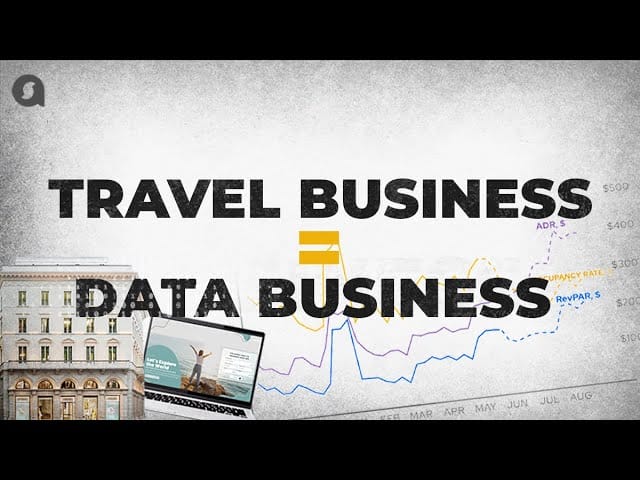

Watch our overview of data management in the travel industry
Valuable facts and figures appear non-stop, but how do you take advantage of them? If not properly administered, most information is lost or unused, generating no profit. In this article, we’ll talk about proven data management approaches and technologies utilized in the hospitality industry to boost revenue and enhance customer experience.
What is data management?
Data management is the policy and practice of treating data as a valuable resource. Its goal is turning information into meaningful insights that enable expense and operation optimization, cost cutting with a resulting increase in profits.
In the hospitality industry, harnessing the power of data helps decision-makers to solve the challenging domain-specific tasks including:
- improving occupancy forecasting,
- setting competitive room prices,
- choosing the most profitable distribution channels,
- optimizing procurement operations,
- increasing guest loyalty, and
- identifying and targeting the most profitable guests.
Let’s take a closer look at major data management processes — data collecting, storing, and analyzing — as applied to the hotel domain.
Hotel data collection: what to look for
A key challenge of hotel data management is the high diversity of available information. It can be extracted from multiple websites, metasearch platforms, social media, internal documents, reports and systems. There are several pillar data sets you have to consider in the first place.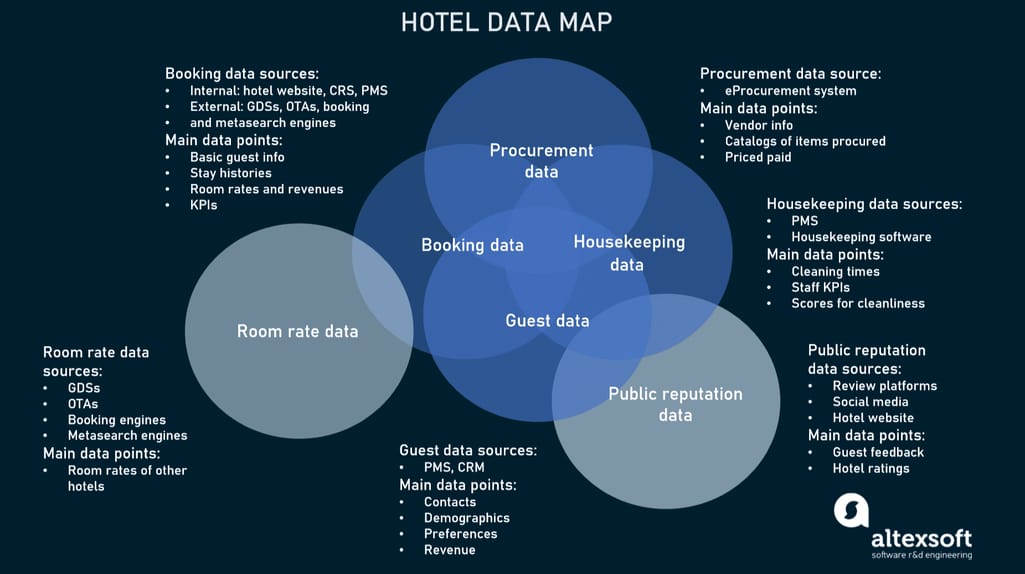
Important hotel data sets and overlaps between them
Booking and property data
The main storage of hotel booking information is your property management system (PMS). While different PMS solutions may have slightly different functionality, their primary role is to work as a single source of truth for the following data points:
- Basic guest information — name, age, country of residence;
- Distribution channel — which distribution channel (your website, OTA, GDS, metasearch platform) was used to make a reservation;
- Lead time — how much in advance a room was booked;
- Length of stay (LOS) — the duration of a guest's stay at your hotel;
- Room price — how much a stay costs per night;
- Room history — who occupies a particular room and when; and
- Key performance metrics (KPIs) — such as Average Daily Rate (average price per room), occupancy rate (the percentage of available rooms), Revenue per Available Room (RevPAR).
It used to be that the only way data got into the PMS was by a front-desk manager manually inputting it. But now, the system also accepts bookings from various online distribution channels, including:
- the hotel website,
- the hotel chain’s central reservation system (CRS),
- online travel agencies (OTAs),
- online booking platforms,
- global distribution systems (GDSs), and
- metasearch engines.
The PMS communicates with external booking sites and systems via a channel manager, that enables two-way data flow and syncs reservation updates across all connected systems.
To provide seamless data sharing, it is recommended to integrate the PMS with other vital modules of hotel software — such as a revenue management system (RMS), customer relationship management system (CRM), housekeeping software, and point of sale (POS) software that handles all hotel sales operations.
Enterprise PMS systems often come stock with the above-mentioned modules already embedded or with an option to easily add new components from the same provider later. If you have software solutions from different providers, you can make them communicate through application programming interfaces (APIs). However, API integrations of third-party applications don’t happen automatically, so you will probably need help from IT specialists to teach pieces of software to “talk” to each other.
Housekeeping data
Cleanliness is one of the top factors for travelers when selecting a hotel to stay. At the same time, a recent study encompassing 15 major hotel brands shows that just investing more in cleaning efforts isn’t enough to guarantee higher scores from your guests. Instead of increasing expenditures, the researchers recommend that hoteliers pay attention to the efficiency of daily housekeeping operations.
Your data can become your best adviser on optimization. To identify gaps and discover opportunities for cost-reduction and quality improvements, you should track, collect, and analyze the following variables:
- the number of staff working;
- stay-over vs checkout cleaning times;
- performance indicators (number of rooms per chambermaid; quality of cleaning);
- linen per available room;
- cost of amenities, cleaning supplies, and chemicals per room cleaned;
- laundry expense;
- information on repairs;
- guest requests and complaints; and
- guest scores for cleanliness.
Recording and systemizing all this data may seem like a painstaking task for hotels that still use paper schedules and walkie-talkies for communication. Luckily, modern housekeeping management software already allows for using smartphones to report on room readiness or fill in quality checklists.
A housemaid working at the Philadelphia Marriott Downtown no longer calls a front-desk manager to let him know that her job is done. She just presses a button on her mobile phone. After the implementation of the app called “Rex” by tech provider Amadeus Hospitality, the company enjoys better performance and checks their guests into rooms faster.
As a rule, housekeeping management systems include a mobile application for staff synced with a manager dashboard, optimized for mobile devices. Housemaids see their schedules, tasks, and lists of assigned rooms right from their smartphones. Once a maid marks a room as clean, its status is instantly changed on the manager dashboard. Additionally, the housekeeping suite tracks time taken to perform each task, offers optimal routes from one hotel unit to another, makes daily reports, and more.
A housekeeping panel with room status indication. Source: INNSight.com
With such technologies managers get more control over staff performance and task completion. And no less important, they can collect data on their staff, guests, and cleaning patterns, adjusting the workflow if necessary.
Room rate data
To set a pricing strategy, you must have data about your competitors' room rates. It takes hours to search for information from different hotels manually and then write it down or enter it in Excel for comparison. For reasons of efficiency, more and more hoteliers are implementing rate shopping software — a technology that pulls price data from hotel websites and booking platforms, allowing you to compare numerous rivals at once.
For example, Marriott International, the third largest hotel chain in the world and the number one hotel company by sales revenue, uses a real-time rate shopping tool called Rate 360. The smart solution works with over 600 sources through direct API connections collecting more than 10 billion rates per month.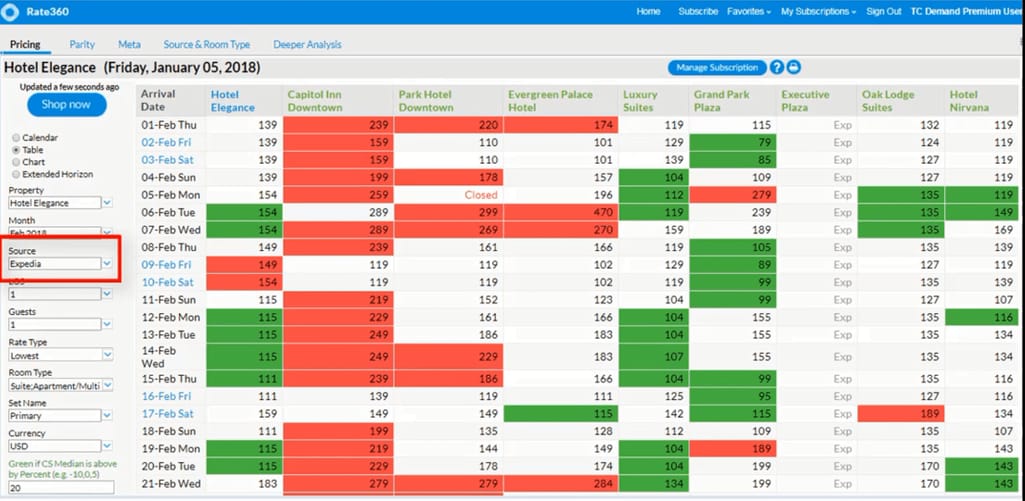
Pricing data from numerous hotels collected by Rate360. Source: TravelClick
Guest data
Before, during and after their stay, hotel guests leave tons of valuable data, which is distributed across different systems and touchpoints including your website, PMS, points of sale, loyalty program profiles, check-in forms, and more. Even WiFi access points generate useful information, telling us how customers are moving inside the hotel, where they are spending most of their time, and which facilities they are using most frequently. Yet, to get clear pictures of your guests and better understand their requirements, you need to pick up all these fragments together.
The importance of collecting and structuring guest data is reflected in a recent survey among hotel chains across the world. It shows that by 2022 Customer Relationship Management (CRM) will become the number one investment priority for hoteliers.
Advanced CRM platforms allow for creating rich guest profiles and obtaining a true “portrait” of each customer. The list of valuable attributes recorded in a profile may include:
- contact information — phone number, physical and e-mail address;
- demographics — age, marital status, number of children;
- reservation data, booking channel preferences, and past booking history (taken from the PMS);
- reasons for stay;
- auxiliary services used;
- food and beverage (F&B) preferences;
- cleaning notes and housekeeping preferences;
- revenue details;
- payment methods; and
- loyalty level (feedback).
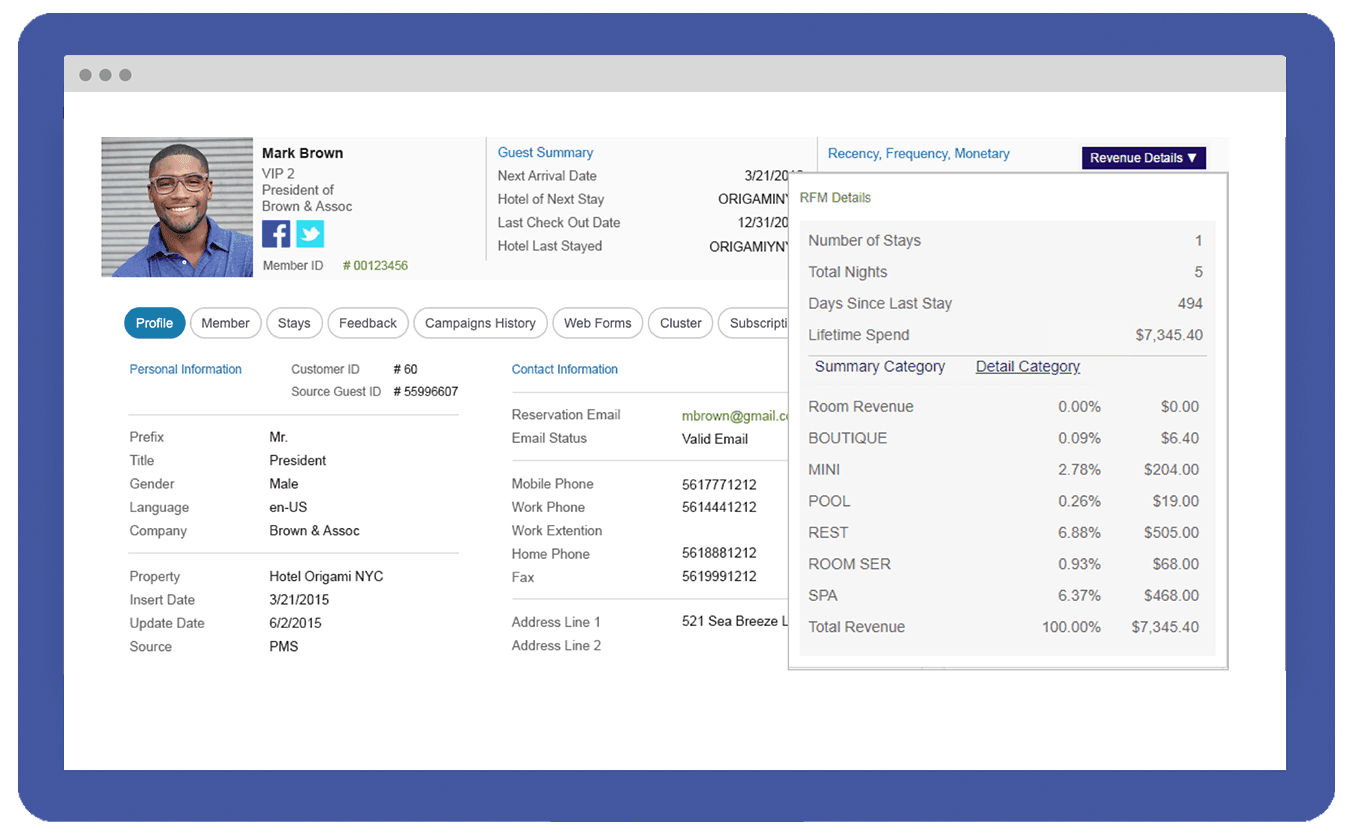
An example of a CRM guest profile. Source: Cendyn
Alongside collecting and organizing customer information, high-end CRM solutions offer a high level of automation. If, say, a repeated client makes a reservation by phone, the system will recognize the number and immediately provide a manager with a corresponding profile.
Of course, the potential of well-structured guest data goes far beyond this and we’ll talk about the opportunities it offers in one of the next sections devoted to analyzing data.
Procurement data
Procurement is an important segment that impacts the hotel business success. Its major challenge is finding the products and services of the highest quality and negotiating the lowest possible price. Apart from purchasing expenses, there are many other figures to be considered: transportation and freight costs, insurance, customs duty, and the like.
In hospitality, procurement tasks become still more complicated due to the diversity of products purchased. The major categories encompassed by hotel procurement managers are:
- food & beverage;
- furniture, fixtures & equipment (FF&E);
- disposables;
- linen and towels;
- services;
- uniforms; and
- printing.
To streamline and simplify procurement operations, modern hotels tend to use e-Procurement systems that collect, store, analyze, and update purchasing data in real time. An early technology adopter is the Hilton Hotel corporation that has been utilizing an e-Procurement platform by BirchStreet for over 15 years.
Designed to manage hospitality and food and beverage spends, the cloud-based system adopted by the hotel giant offers real-time tracking of purchase transactions, uncovers the slightest discrepancies between purchase orders and invoices, automatically generates standard documents, and provides budget analysis. Hilton reports that the technology improves visibility of procurement operations and increases performance that, in turn, drives savings. Thanks to paperwork reduction, it takes no more than a day to process one grocery order — instead of three days as in the past.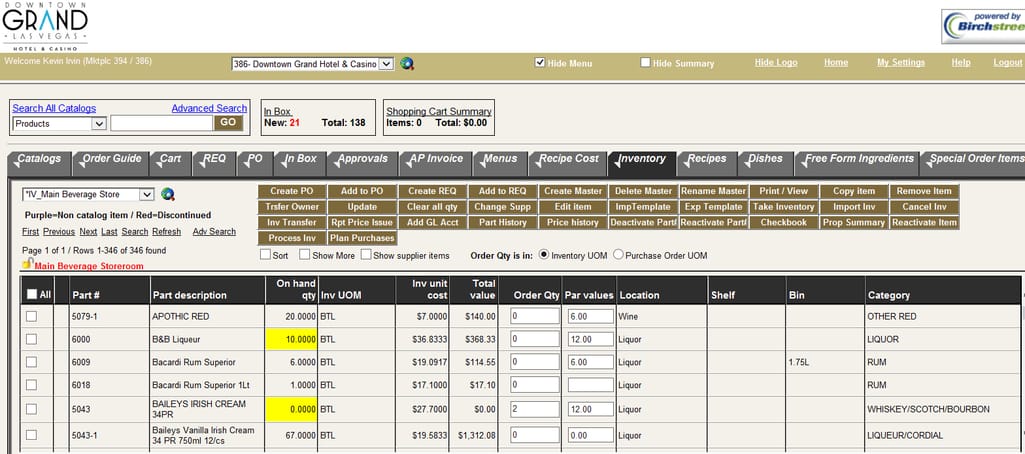
An e-Procurement grid to manage a hotel restaurant supplies. Source: BirchStreet
Public reputation data
Recent statistics show that 93 percent of travelers read online reviews when looking for a hotel to stay in. So, tracking and collecting guest feedback left on booking platforms, OTA websites, social media, and other external sources is vital for your business success. This type of data lets you:
- better understand pain points and guest needs,
- recognize opportunities for improvements,
- minimize damage caused by negative reviews, and
- eliminate future complaints.
Monitoring and collecting reviews is a time-consuming, tedious task if performed manually. It would be better to utilize reputation management and social listening tools that crawl the internet to find mentions of your hotel.
Reputation management system dashboards allow you to track, analyze and respond to reviews and rankings online. Source: DJUBO
Reputation management systems use natural language processing and machine learning to read, filter and classify reviews spotted on Google, TripAdvisor, Expedia, Booking.com as well as on your own website. They allow you to identify what your customers like and dislike about your hotel. You can also immediately respond to negative comments and let your guests know that you care about them. Some solutions are equipped with analytical features to show how your online reputation changes in the course of time.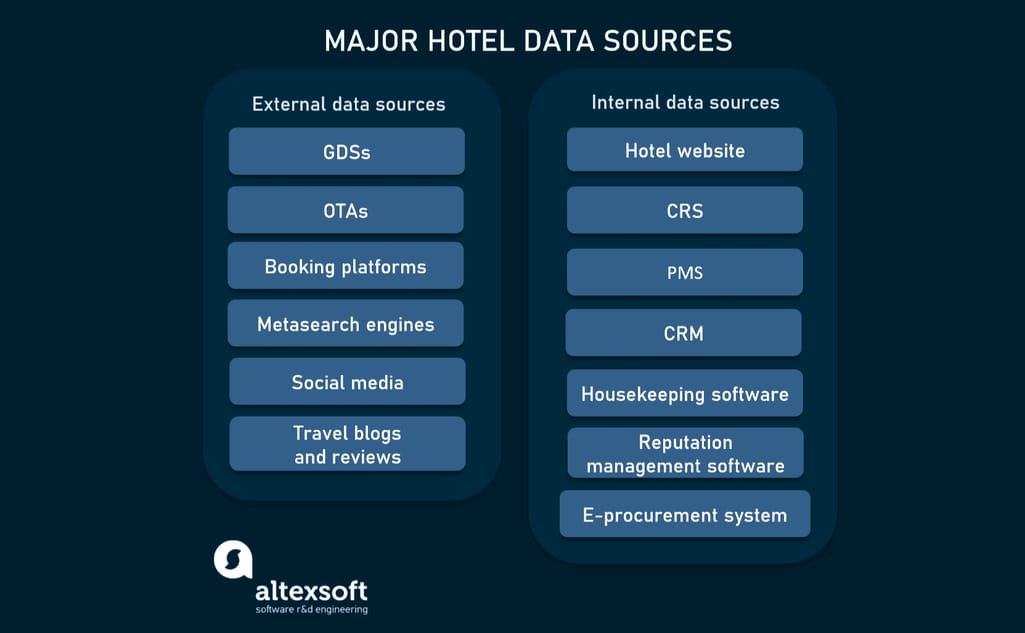
Major hotel data sources overview
Hotel data storing: consider warehouses
Once you know where to find valuable data, the next question that arises is how to preserve it and prepare for further processing and business analysis. You have to collect pieces of information scattered across numerous systems and move them to some kind of a unified repository.
Data science experts at AltexSoft suggest using an enterprise data warehouse that stores large volumes of hotel data in a manageable form. On the way from source systems to the central “library,” the information undergoes a multistep ETL (Extract, Transform, and Load) process. ETL tools are designed to:
- retrieve all the required data,
- clean and sort it,
- eliminate anomalies and duplications,
- convert data to a standardized and convenient format, and
- only then pipe data to the targeted warehouse.

Data processing in a nutshell and ETL steps outline
Assuming that your hospitality business doesn’t necessarily have a team of IT people, you will need a third-party team of data engineers to build a customized solution to suit your specific needs.
But even perfectly cleansed and standardized, data is useless if it just stays in the warehouse. To make it work you must to apply analytics and data visualization practices that will help you understand trends and make better decisions.
Hotel data analysis: getting value from variables
Though many hotel systems have built-in analytics tools, their capabilities may be restricted to solving narrow tasks in a particular niche. As a rule, software like the PMS provides you with basic business KPIs but doesn’t explain trends and their causes. If you see that the occupancy rate is lower than expected, you often can’t respond adequately without additional insights.
To dive deeper into available information and turn it into effective decisions, you need tailored business intelligence (BI) solutions that work with different data sources and present results in a convenient visual form. Let’s see how hotels can get a boost from modern BI-fueled software.
Better demand forecasting and price optimization
Demand forecasting and price optimization are the main tasks of revenue management (RM) that aims at maximizing profitability for hotels. Often the concept of RM is described as “selling rooms via the right distribution channels to the right clients at the right time and for the right price.”
The biggest key to solving this equation with numerous unknowns is the right technology. It should take into account multiple factors (from weather to upcoming events) impacting booking decisions and support real-time or dynamic pricing — a set of practices for aligning room rates with shifts in demand.
Red Roof Inn use case: capitalizing on the bad weather
The US economy hotel chain used analytical tools to predict that 3 percent of flight cancelations will lead to nearly 90,000 passengers stranded in airports near their hotels every day. Next, revenue managers reached publicly available weather reports and datasets on flight cancellations to forecast when and where delays and cancellations would likely hit the 3 percent limit.
Then, knowing that most passengers would use mobile phones to search for nearby lodging options the company launched a marketing campaign aimed at mobile device users in the geographical areas affected by the bad weather. This resulted in a 10 percent increase in revenue in regions where the strategy was employed.
Estimating channel profitability
To learn the demand level for each of your distribution channels, you can just look through your PMS reports. However, for understanding a channel’s true value, you need to consider far more facts and figures such as:
- commissions and advertising costs;
- average income per day, month, and year;
- cancellation rate; and
- days of the week when the channel in question attracts most bookings.
After feeding this data to business intelligence, you can identify OTAs or booking engines that attract most deluxe room reservations, design optimal channel mix and turn down sources that don’t generate profits.
Improving customer experience
A recent survey by the Global Business Travel Association (GBTA) shows that only one in five hospitality companies have implemented customer satisfaction programs. It’s no wonder as the guest-first approach requires extra investments, including spendings on new technologies. Yet, saving money now risks losing demanding clients to competitors in the near future.
The core of a profitable client-centric strategy is guest data, captured by hotel software and external sources. Business intelligence can turn fragmented information into recommendations on what should be improved to keep guests happy and how to enhance the customer experience at every step of their hotel journey, from the booking phase to checkout.
Denihan Hospitality use case: fighting noise in New York
An owner of luxury and boutique hotels across the US applied an IBM analytics tool to extract insightful information from internal customer data and comments found on rating websites like TripAdvisor.
The findings allowed company executives to better understand customer preferences and needs. Among other things, they revealed that outside noise was the number one complaint across the brand’s 11 hotels in New York. The company responded to the challenge with the “Put NYC on Mute” initiative, providing all guestrooms with free earplugs. Overall, investment in the data-driven customer satisfaction strategy gave a 30-fold return.
Identifying the total guest value
From a revenue manager’s point of view, not all guests are equal. Some visitors limit themselves to using hotel rooms only, not ordering additional services, while others splurge on dining, fitness activities, spa treatments, hotel casino, celebrating special occasions, and so on.
By using BI tools, revenue managers can go beyond the standard performance metrics such as RevPAR (revenue per available room) and spot the most profitable customers along with their behavior patterns and preferences. This information is essential for targeting high-rolling clients with tailored, personalized offers and turning them into repeat guests.
Optimizing housekeeping expenses
As mentioned before, cleanliness is the primary factor affecting booking decisions. Meanwhile, when hotels spend more on keeping rooms clean, guests all too often don’t notice positive changes. Regarding these facts and the rising cost of labor, many hospitality companies took an analytical approach to understand how they can minimize expenses without sacrificing quality.
Business intelligence goes through huge quantities of housekeeping data to solve the cost-efficiency equations. Every detail matters: from the time a housemaid spent waiting for fresh towels in the laundry room to the consumption of cleaning supplies depending on flooring type. The outputs generated by BI translate into new performance standards and keeping everybody more efficient.
McNeill Hotel Company use case: utilizing male staff to aid housemaids
A Tennessee-based owner and developer of hotel property applied analytics to combine metrics like the number of linen sets per one card, time spent to load and carry it to the laundry room, and linens in rotation per day, to name a few. As a result, manages saw room for improvement and engaged the male workforce in housekeeping activities.
Now, housemen whose morning routine typically includes cleaning common areas and removing trash help housemaids with stripping dirty sheets. The men also restock carts with fresh linen. This allows women focus on cleaning tasks only, doing their job faster and better. The strategy enables housemaids to save up to three minutes per room while increasing cleanliness rates.
How to make sense of data chaos
Data in itself is worthless and, worse yet, can disorient or drive to wrong conclusions. Without implementing a data management culture, hotel administrators and other employees can be buried in heaps of diversified and often conflicting facts and figures. Here are some final tips to harness your data and make it priceless.
- Don’t collect more than necessary. Decide why you need particular data and how it can help you reach your business goals. Don’t waste time and storage space on information you are not going to utilize.
- Integrate. Hotels often tend to operate isolated applications for different functional areas. Ideally, all your systems and tools should be integrated with each other for seamless data exchange.
- Centralize. If possible, use a single dashboard connected with different systems. This way, you will have a centralized view of your business and bring all departments together.
- Invest in training. Teach your staff to collect, unify, and organize data in the hotel software, using different sources of information — both physical and digital.
- Keep it in a data warehouse. This will ensure that the data you need is cleansed, structured, conveniently packaged, always at hand, and ready to use by analytical tools.
- Analyze it. Perhaps, your PMS can calculate key hotel KPIs, based on booking data it operates. Yet, you need more powerful analytics tools to extract valuable insights. There are many ready-to-use BI solutions on the market. However, chances are that none of them will perfectly fit your specific business needs. Custom BI solutions offer more flexibility and will accurately meet your requirements. But, it takes time, money and tech skills to develop them. Anyway, consult with BI analysts first to balance cost, quality, and efficiency.
- Visualize it. Your business intelligence may apply extremely complex algorithms to endless rows and columns of data. However, the results should be presented in a comprehensible and helpful form so your hotel managers can use it to track trends, tweak their daily workflow, and make better decisions. At the end of the day, the data should make everybody’s life and work easier rather than the reverse.
